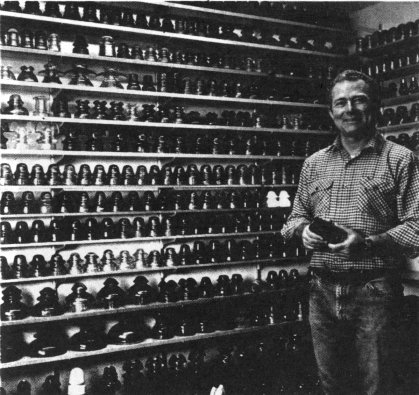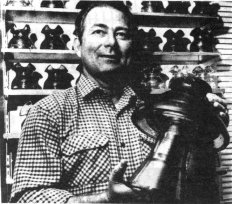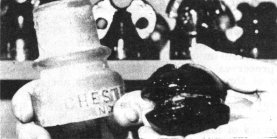Insulators SMUDMEN Know and Love
Reprinted from "INSULATORS - Crown Jewels of the Wire", November 1973, page 10
(This article was copied with permission from Hi Lines, Sacramento Municipal
Utility District paper, March 1973 issue.)
To SMUD line subforeman, Wally Wright, the terms mickey mouse, roman helmet,
bat ears, and pilgrim hat have a special meaning. They describe types of glass
insulators--some still in use, others nearly forgotten in the history of power,
telephone and telegraph distribution.
Certainly the descriptive names are no
less colorful than the glass they represent. Go to the home of Wally and you'll
find glistening glass of every hue--purple, aqua and amber--honey and emerald
green, interspersed with shimmering "carnivals."
The last is the color
of insulators cast from glass plates-gaudy prizes never awarded by some
long-defunct carnival. Many such insulator "gems" were made from
melted-down glass discards. In the early days there were numerous patents and
manufacturers. In addition, sun and age played strange tricks on the glass,
creating a seemingly endless variety of patterns, colors and brands.
|

|
|
GLASS MENAGERIE -Wally Wright, a SMUD line subforeman, displays what is possibly the biggest insulator collection in Sacramento. His
hobby fills a room, with 750 pieces- all different - plus over 1,000 extra
"traders."
|
|

|
| COOLIE HAT - Wright shows a "coolie hat" insulator from the midwest
which was cast around 1893. It was used for high voltage power transmission. |
Until recently most people--even bottle collectors and junkmen- ignored old
insulators. Not so today. Serious collectors like Wright will travel cross
country tracking down a rare specimen. They scour antique stores, junkyards and
rummage; they dig around old dumps; and explore abandoned mines and railroad
tracks And finally they swap with other collectors in special shows and through
the mail.
|

|
RARITIES --
a "pilgrim hat threadless" circa 1850 -- his oldest item, and
a "California egg" made in 1912, his rarest piece. |
|
